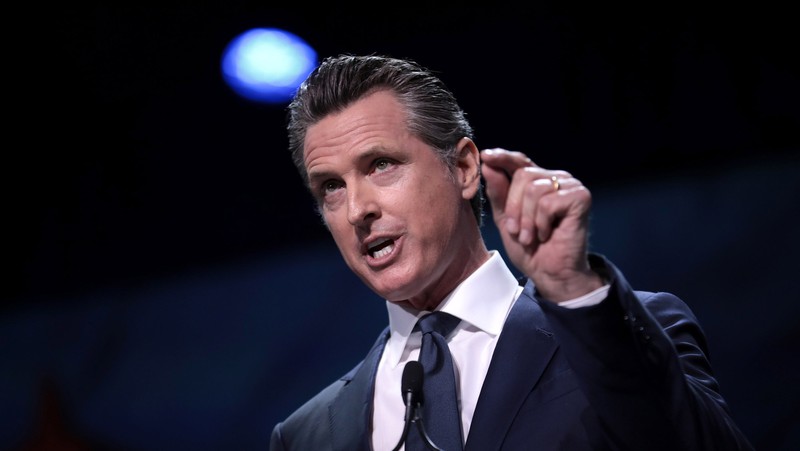
Gavin Newsom was the first governor in the U.S. to shutter retail businesses and issue stay at-home-orders. That's how he got this halo.
<p>Photo by Gage Skidmore</p>
CC-BY-SA 2.0
California remains a leader in limiting the number of COVID-19 deaths, with its comparatively low results attributed to California Gov. Gavin Newsom’s March 19 orders to shut down nonessential businesses, close schools, and shelter in place. Newsom was the first governor in the country to issue such statewide orders. Counties and cities throughout the state supported his action by issuing complementary orders to shelter in place, particularly in the Bay Area.
In early April, Newsom said in an interview with National Public Radio reporter Maureen Pao that California bent the curve. “What we've been successful at doing is...buying us time. We're seeing modest and moderate growth on a daily basis,” Newsom said. As of late April, California’s restrictions have not expired. Newsom said in a mid-April interview with NPR reporter Merrit Kennedy that changes may not happen “all at once.”
“There's no light switch here. It's more like a dimmer,” he said, adding that the state will likely move “back and forth between more restrictive and less restrictive measures.”
Comparing Other States’ Actions
Other states have taken different roads than California. Massachusetts has a stay-at-home advisory. Nebraska and South Dakota do not have stay-at-home orders. Other Western states seemed to follow Newsom’s lead. Oregon and Washington issued stay-at-home orders on March 23. Arizona issued its on March 31, and Nevada on April 1. A group of states that includes California, Colorado, Nevada, Oregon, and Washington have entered into a Western States Pact to modify stay-at-home orders as a group. The participating states believe this approach will slow the spread of the virus.
Understanding California’s Importance
With an estimated population of almost 40 million in 2019, California is the most populated state in the nation. One out of every eight people in the U.S. lives in California. The serious tone and severe actions that Newsom took early on affected a huge swath of the nation. Newsom’s move has influenced other states’ approaches, motivating mayors in neighboring states to call for statewide orders. California has made access to testing and screening for COVID-19 more available than other states. Although access to testing and services varies by county, the state has waived copays, insurance, and deductibles for COVID-19 testing and screening for all patients with full-service Medi-Cal and commercial insurance. COVID-19 testing and screening is not guaranteed free in every state. California employers and workers contributed greatly to the effort to reduce the number of COVID-19 cases. In mid March, the state’s largest tech employers began encouraging employees to work from home. Agricultural producers in the Central Valley started following COVID-19 safety guidelines for farmworkers. Southern California amusement parks shut down, aiding the effort to discourage tourism.
Nonprofit and Government Efforts Keep Numbers Low
California’s continued success is due to work by government officials and nonprofit organizations to ensure the safety of vulnerable populations. Large nonprofits such as community foundations and United Way are providing grants to smaller nonprofits to deliver meals to seniors, undocumented immigrants, children, immunosuppressed individuals, and people experiencing homelessness. On April 24, Gov. Newsom began the Restaurants Deliver program, a state-funded program that will pay local businesses to deliver nutritious meals to seniors.
Cities including Oakland have paid local hotels to house people experiencing homelessness. This discourages contact between individuals as well as movement of individuals between cities.
The state has organized drives for individuals and companies to donate medical supplies such as face masks and gloves, providing personal protective equipment for healthcare workers. The state also encouraged individuals with medical experience to sign for a volunteer health corps. The call drew more than 81,000 applicants. Hospitals now have the manpower to offer workers assistance.
California remains on the forefront with innovative ideas to reduce the spread of the virus. The state has encouraged younger residents to volunteer to provide support to older individuals isolating at home. Jails and prisons have released nonviolent offenders and halted the intake of certain populations. In addition, throughout the state, university researchers are collaborating with volunteers, nonprofits, and donors to develop tests and treatments for the novel coronavirus. Most importantly, public and private universities are also engaged in research to find a vaccine.
Long form articles which explain how something works, or provide context or background information about a current issue or topic.